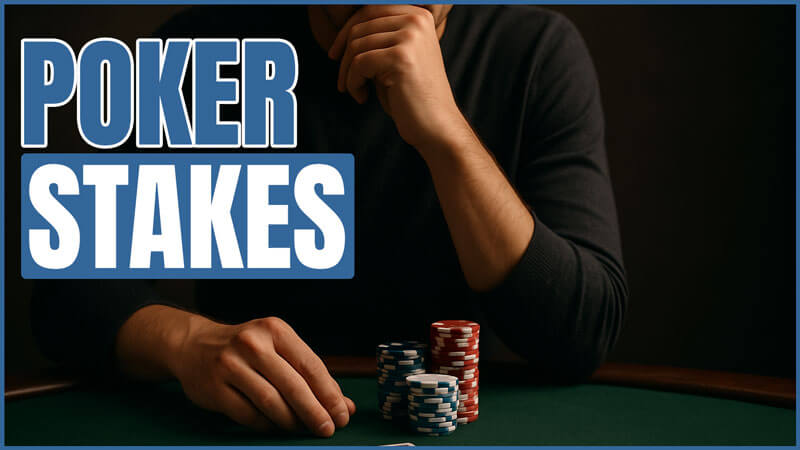Poker Stakes: Stop Giving Back Your Winnings
How many times have you had a great session, a tournament win, or a great week, and flushed it all away (and more) by taking a shot at a higher limit that you’re not ready or bankrolled for?
If the answer is zero, then you’re part of a rare group of poker players who have consistently shown the discipline to stay within their bankroll — an essential skill for long-term success.
Gambling Instinct
The gambling instinct is strong in poker players. Many professional players are famous (or infamous) for their prodigious betting on casino games, golf, sports, or prop bets.
All poker is gambling to a certain extent, but if you have the skill to mostly get the best of things, and the discipline to play that way consistently, you will come out on the winning side of those gambles more often than not.
But to be a really successful poker player, you need to understand bankroll management and playing at the stakes that are within the limits of your bankroll.
Lets say that you are a $5 tournament player and have a $500 bankroll. You have 100 buyins in your bankroll and are playing within your bankroll with good bankroll management to ensure you can survive the swings of poker.
Now lets say you have a good result and finish deep in a large field tournament, winning $500. Now your bankroll is at $1,000. You could take the sensible approach and take one step up the rung to start playing $10 tournaments. But instead you decide to take a shot at a big money tournament and enter a several hundred dollar buy in tournament.
What’s wrong with that, you might ask. It feels like an extra win, and if you lose, you tell yourself there’s still your original bankroll of $500 to fall back on. Well, they are all true points, but by taking a shot, you are giving up the chance to move up to a higher level on a regular basis.
If you are a skilful player then you will gain much more by moving up the stake levels slowly, and you will soon work your way up to the level that you deserve to be at, with a bankroll that supports it. Trying to jump ahead a few steps by chasing a big win rarely works out. In poker, as with many things, steady progress is more reliable than shortcuts.
There are a number of factors that influence things when you try to play way above your normal limits, and we’ll take a look at them in this next section.
The Risks: Taking a Shot above your Normal Stakes
If you understand the risks of playing above your normal stakes and taking a shot, then hopefully you can avoid falling into some of these traps.
Higher Skill Level
Higher limits usually have higher skilled players. Certainly this is not always true, as some $1/2 no limit holdem players are as good or better than some higher stakes players, but considering that many higher-stakes players also worked their way up, they are often more experienced and the competition will usually be better.
Fear of Loss
Fear of loss affects anyone playing outside their bankroll. If you usually play with $50 pots, suddenly risking $500 can alter your decision-making and lead you away from your usual strategy, likely to play more conservatively — often with negative results.
You can tell yourself you’ll wait for a big hand, but if that wait takes too long, you won’t get any action. Plus, some of the small investments you make preflop waiting for that big spot will wear down your buy in, and unlike the other players, you can’t easily reload your stack.
Potential Tilt
Potential tilt is the biggest danger of taking a shot at higher stakes. You may well limit yourself to a one buy in shot, but losing that buy in is the least of your worries.
It is quite common after tasting higher stakes to be very demotivated back at your regular stake level and what tends to happen is players end up changing their playing style after returning to a lower stakes level in order to try and get back what they “deserve”, chasing pots in an attempt to return to higher stakes. This kind of emotional play often backfires and can lead to tilt, making it even harder to recover and stick to a disciplined approach.
The Sensible Approach
The best approach is to take it slowly when moving up stakes. If you have a good win, then use it to jump up one rung of the ladder. Then use your time playing that next stake level to gain more experience and continue to build your bankroll up to the next stake level.
If you are as good as your current results indicate, you will continue to move up the stake levels and at the same time improve your game and adjust more readily to the changes that are required at each level.
As with any skill-based activity—whether it’s sports, business, or poker—consistent effort and discipline are usually what lead to success. There are very, very few naturals. If you really are a natural, it will be revealed soon enough. If you’re not, but you work for it, the taste of success will be even sweeter.
